Targi is a game for two players, where each tries to control trade in the Sahara with their Tuareg tribes. It’s been a stalwart in many players’ collections since its release in 2012, but what makes it so special, and why am I talking about it in 2020? Read on and find out.
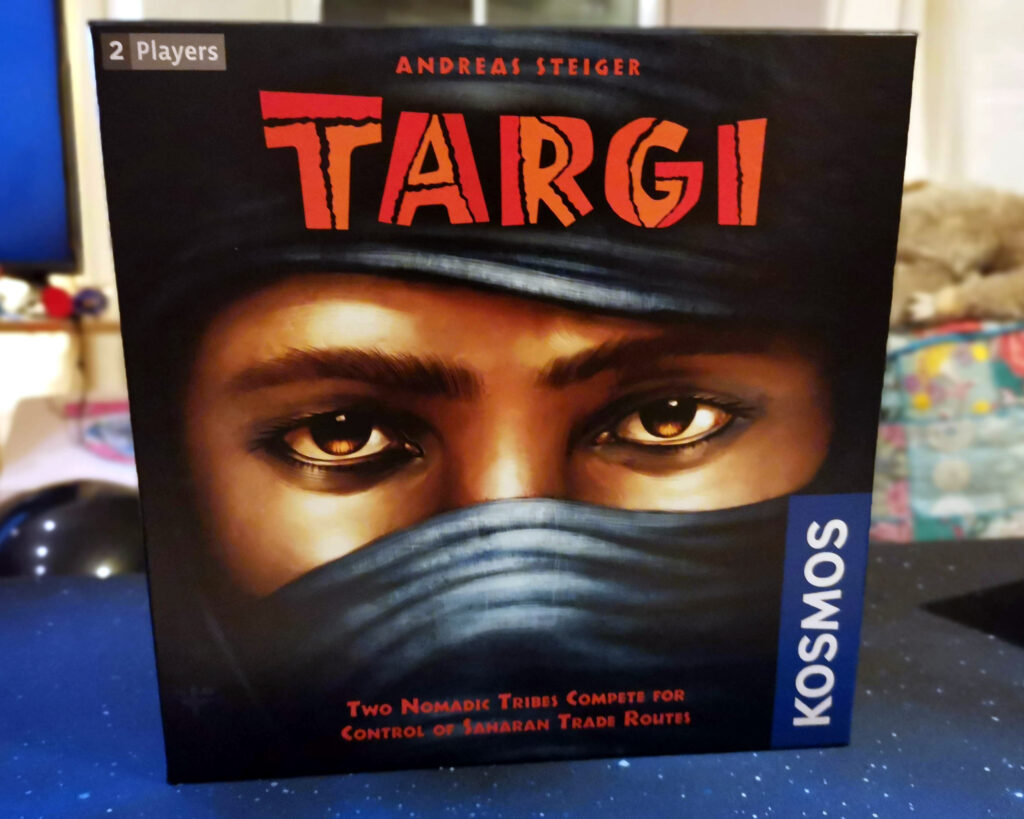
The idea of Targi is pretty simple really. A desert tableau of cards is placed on the table, and players take turns to place their meeples on the border cards. Doing this blocks players on the same row or column, and then the resources each player gathers for the cards they claim can be spent on tribal cards, which give victory points.
It’s maybe not the most exciting theme to spring to mind for many people, and it doesn’t even have a board. So it must be doing something right to be sat just outside the top 100 on BGG. Maybe it’s the components?
What’s In The Box?
Hmm, well, the components are nothing to write home about. Inside this small box – which is that standard small box size now, like 7 Wonders: Duel – are:
- Two sets of player pieces – three Targi markers and two tribal markers each
- One grey ‘robber’ meeple
- A load of resource tiles – dates, salt, pepper, gold coins and silver cross victory point markers
- 16 ‘Edge cards’, which mark the boundary of the game
- 45 Tribal cards
- 19 Goods cards
- A rule book
- A nice little first player silver tile.
That’s not to say that there’s anything wrong with the box contents. In fact, I really like the fact it’s so simple. In the days where setting up something like Anachrony feels like a task in itself, being able to tip a little box onto a table and be up and running in five minutes is a really nice feeling.

The cards are standard issue, the little wooden player pieces like nice with the white and pale blue contrast, and the card tiles for resources are sturdy enough. It’s not going to blow your mind, but you wouldn’t expect it to for a game that costs less than £20. So why should you, or anyone else, bother with this game over countless other small box offerings?
How Does It Play?
Now we’re getting into the good bit, the meat in this sandwich. Because desert… sand… never mind.
Setup and Gameplay
The edge cards are all numbered, and form the outer border of a 5×5 grid on the table. They always go down in the same order. Then five goods and four tribal cards follow the pattern in the rule book and fill in the space in the middle, to make our 25 card desert. The grey robber meeple goes on card number one, and each round moves onto the next card, blocking it from use.
Players take turns to place their three tribe meeples on the outer border cards, alternately. They can put them anywhere they like, as long as they meet the basic rules:
- You may not place on a corner ‘raid’ card
- You may not place on a card where any other meeple is, including the robber
- You may not place your meeple directly opposite one your opponent’s
That last one, about not playing opposite, that’s where the tactics stem from, Once all the meeples are placed, the players place their tribal markers (little round wooden discs) on the cards that mark the intersections of their meeples, like in the picture below.
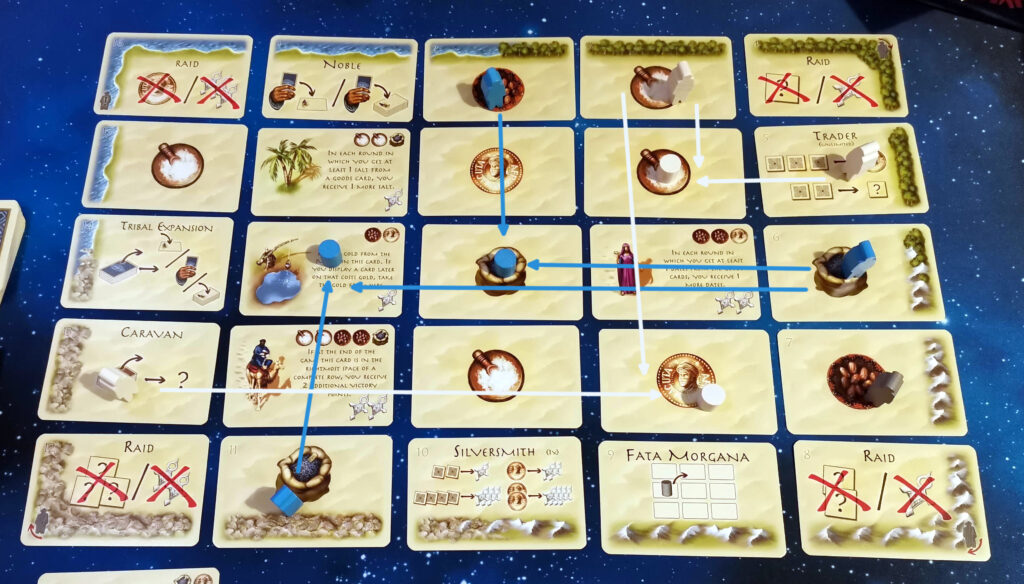
Now the first player (the first player marker switches between the players at the start of each round) retrieves their pieces, taking whatever goods or actions are on the cards. For the edge cards, that can be as simple as taking a pepper or salt, or maybe using the trader to sell three identical goods for a gold coin. There are lots of options, I won’t go into all of them here. For the cards in the middle, it depends what kind of cards they’re retrieving.
Building Your Tribes
Goods cards from the middle just give you the resources shown, and then go onto the discard pile. Tribal cards, however, are different. Each has a cost on the top, a number of goods and/or coins. If you can pay those goods, you can place it in front of you. In the lower corner, the victory points are shown.
Your tribal cards can be laid out in a grid of three rows of four cards, always adding from the left. Any effects on those cards are instantly added to the game, so for example you might have one that says any time you add another Oasis card to your display, you pay one less resource. If, at the end of the game, your rows of cards have four matching types (there are Oasis, Well, Targi, Camel Rider and Tent) in, you get an additional four VPs. If all four in a row are all different, you get an extra two VPs instead,
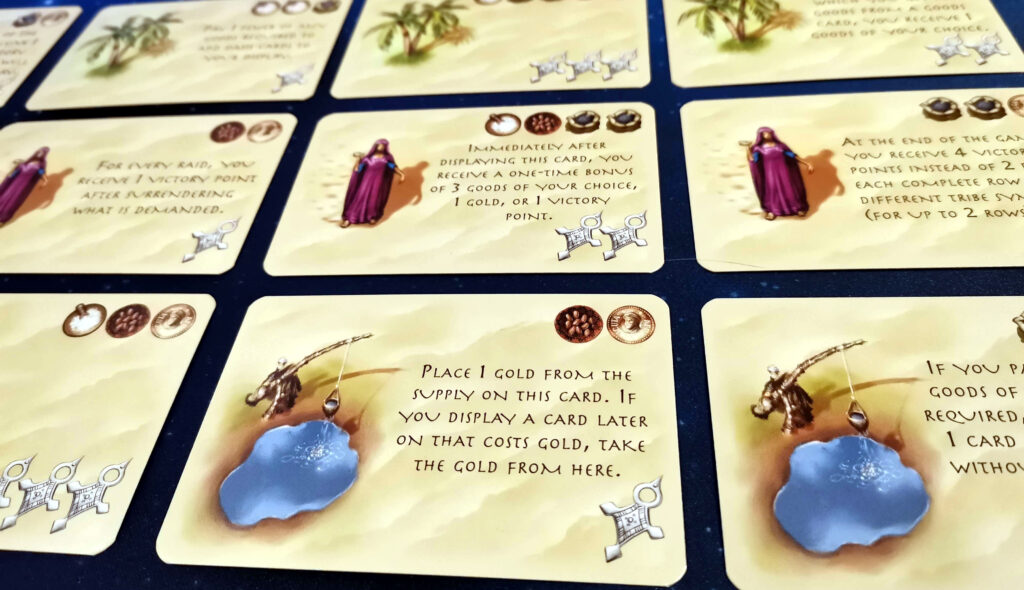
If you can’t pay for the card immediately, you can keep one card in hand. To play it later, you need to have the resources and place a meeple on the Noble edge card. Unless, of course, you’re holding it just because you don’t want the other person to have it. But you wouldn’t be that sneaky, would you?
This is where the competition comes in, and makes the game come alive.
Competition Time!
Everything in the game is public knowledge, so both players can see both players’ tribal tableau and resources. Placing your meeples and blocking rows, columns and intercepts is a fine balancing act between claiming the things you want and stopping the other player from getting what they want. When you consider this is essentially a Eurogame, the level of interaction – if not direct – is really high.
You constantly need to be aware of what tribal cards are up for grabs, what resources the other person has, what powers their cards might grant them to change the cost or effects, what kind of tribal cards they might be after for their tableau. And all the while you’re trying to do the same for yourself. Just to top things off, when the robber gets to a corner card, there’s a raid, and both players have to give up increasing amounts of goods or victory points to the thieving grey git.
The end of the game is triggered by either the robber completing his lap of the edge cards, or one player adding the twelfth card to their display. Players count up the VP tiles they have, the VPs from their tribal cards, any bonuses for rows, and finally any bonuses your tribal cards might give you (e.g. ‘you get one VP for every two well cards in your display). The player with the most, wins.
Final Thoughts
Targi packs a lot of game in a small box. It’s one of those gems that’s really easy to learn, and as soon as those first couple of turns are over, the rules disappear into the background, leaving the players to play the game. That might not make much sense to you, but compare it to a really heavy Eurogame like Paladins of the West Kingdom, or Bonfire, and see how many times you need to plan your moves ahead with the help of the rulebook. With Targi, the (small) rulebook can stay in the box for the entire game.
The gameplay is gloriously simple, but offers so many tactical choices with every single placement. The internal conflict in the late game, trying to decide whether to get something you need or to stop your opponent getting something they really need, leads to some really interesting decisions.
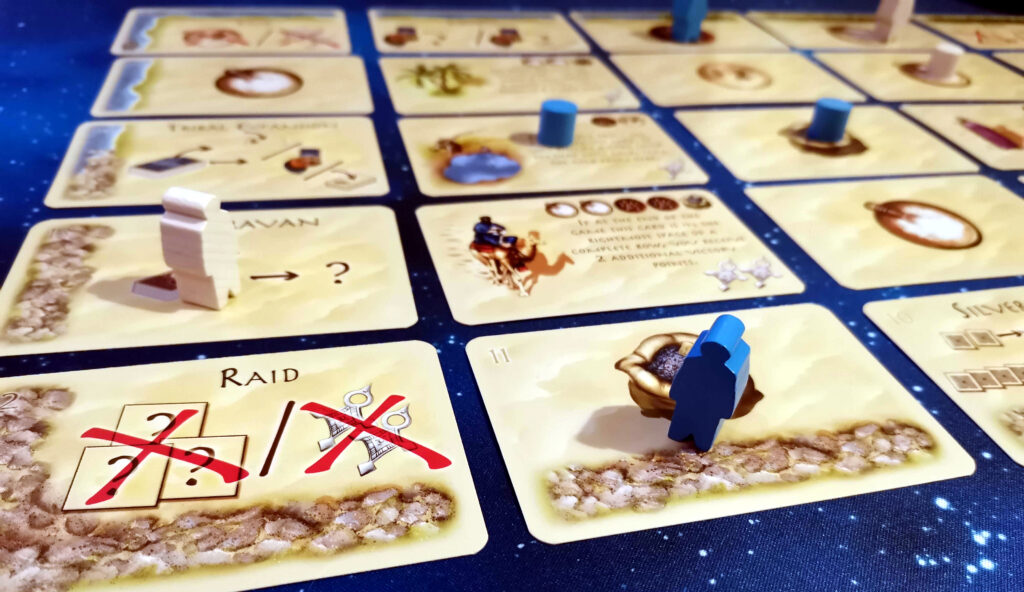
This is a game where you’ll spend a lot of time going ‘Ooooh you $@*&, I wanted that!“, or helpfully suggesting they might need that thing on that card, because you’ve secretly got your eye on something you don’t want them to block.
It’s not a game dripping with theme, after all it’s some cards on a table which are meant to represent a barren desert, so it’s probably not going to appeal to people who like a load of minis marching around slaughtering one another. But once you abstract the game from the theme, it’s a fiercely competitive, closely-fought battle of strategy, misdirection and optimal play.
I’m a massive fan of Targi, and I only wish I’d bought it sooner than this year. One thing’s for certain though, I’ll always have a copy in my collection, and I’ve already got the expansion on my wishlist. If you’ve got a regular ‘player two’ it’s a must-have in my opinion. Andy Steiger, the designer of the game, has also released a solo variant which makes a good alternative if you find yourself on your own and wanting to play. You can download it here.
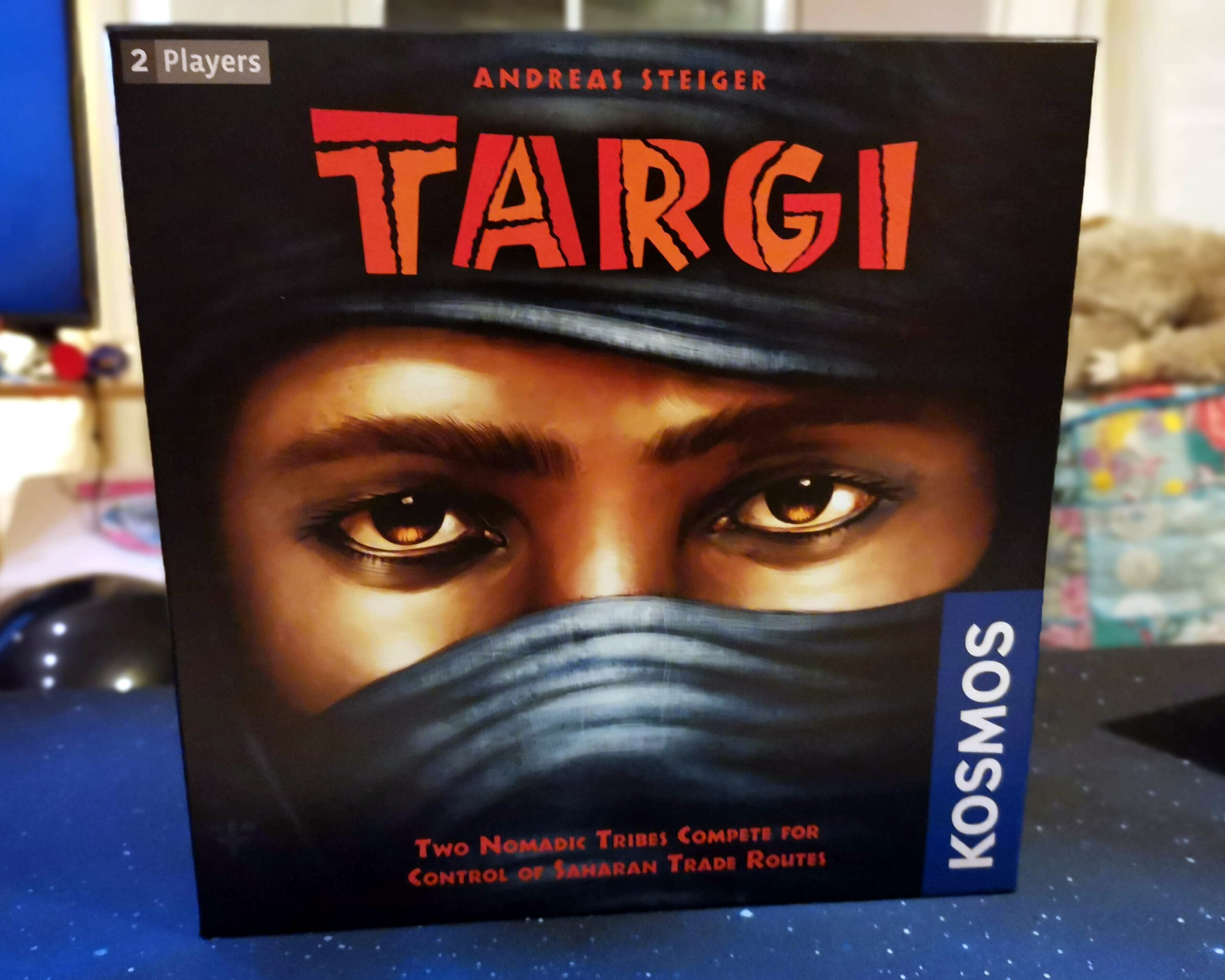
I love it too! One question. What if you cannot pay for a raid?
Hi Tess,
If you can’t afford the raid, you have to pay 1VP instead.